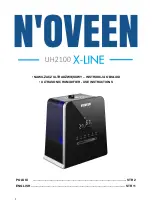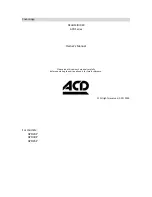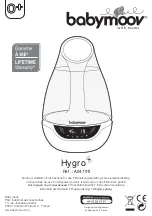
25
a) Measure and write down the inside dimensions “A” and “B” of the handway weld
ring. See Figure 6.3(a).
b)
Verify the size of the handway assembly by comparing the weld ring measurements
from step “a” to the dimensions shown in Table 6.3(c).
c)
Verify that the dimensions of the cover, crabs, bolts, and gasket match the
corresponding dimensions given in Table 6.3(c).
Note:
The actual dimensions may
vary by up to 1/4" from those given in Table 6.3(c).
d)
Replace any component that is not dimensional correct. Incorrect dimensions
indicate that the component is part of a different size handway assembly.
The handway assembly is part of a Pressurized Vessel. Use of incorrect handway
components will result in assembly failure. Assembly failure will propel objects causing
serious injury or death.
6.3.2. Inspect the handway gasket for tears, cracks, or other wear. Replace if necessary.
6.3.3. Inspect the handway weld ring sealing surface inside the vessel. Inspect the handway
cover sealing surface. Both surfaces must be smooth.
6.3.4. Place the gasket on the handway cover then fit both through the opening.
6.3.5. Place the cover and gasket in position against the inside edge of the handway weld ring.
Apply a pulling force to hold in position then proceed.
6.3.6. Center the gasket on the handway weld ring.
6.3.7. Center the handway cover on the gasket.
6.3.8. Center the handway crab on the outside weld ring.
6.3.9. Slide the handway crab bolt to the inside edge of the slot before tightening. See Figure
6.3(a).
6.3.10. When all components are centered and the crab bolt is bottomed in the slot, tighten the
nut onto the bolt with a wrench until snug.
6.3.11. Only after completing all the pre-operation procedures in Section 6.0 and the AirPrep
System is then pressurized, re-tighten the nut with a wrench until snug again.
6.3.12. Do not over-tighten the crab nut and bolt. Over-tightening could bend the crab out of
shape resulting in malfunction of the assembly.
6.3.13. Periodically check for leaks.
















































